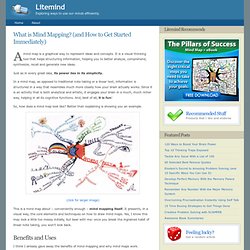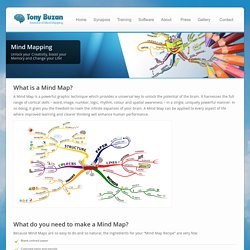

Pearltrees extends its mind mapping and curation application to the iPad. Earlier this week, Pearltrees for iPad was launched, enabling collectors and curators of web content to do so on Apple’s popular tablet.

The iPad’s touch interface is a perfect complement to this popular tool, which has signed up over 200,000 users for the web-based version of Pearltrees during the last year and a half. This functioned just the way I like it – seamlessly. At the time I reviewed the browser version of Pearltrees in December 2009, I wasn’t quite sure what all the excitement was about. Since then, content curation has gotten a lot of attention, as business people and consumers alike seek ways to save interesting web content for future reference.
Pearltrees for iPad extends this visual exploration model to the world’s most popular tablet, accessing your online Pearltrees account seamlessly. A powerful discovery tool Pearltrees for iPad isn’t just an elegant tool for curating web pages in which you’re interested, it’s also a powerful tool for information discovery. Conclusion. Mind Mapping. Mind Mapping. What is Mind Mapping? (and How to Get Started Immediately) A mind map is a graphical way to represent ideas and concepts.

It is a visual thinking tool that helps structuring information, helping you to better analyze, comprehend, synthesize, recall and generate new ideas. Just as in every great idea, its power lies in its simplicity. What is Mind Mapping? What is Mind Mapping?

A Mind Map is a diagram used to represent concepts, ideas, tasks or other items linked to a central theme. In a Mind Map, the central theme is often illustrated with a graphical image. The ideas related to the main theme radiate in a clockwise direction from that central image as "branches". Topics and ideas of lesser importance are represented as "sub-branches"of their relevant branch. By presenting the relationships between ideas in a non-linear graphical manner, Mind Mapping encourages a brainstorming approach to the handling and organization of information. Mind Maps have many strengths and benefits: Simple Easy to createEasy to expand Easy to filter Visual. Mind Mapping - Tony Buzan. What is a Mind Map?

A Mind Map is a powerful graphic technique which provides a universal key to unlock the potential of the brain. It harnesses the full range of cortical skills – word, image, number, logic, rhythm, colour and spatial awareness – in a single, uniquely powerful manner. In so doing, it gives you the freedom to roam the infinite expanses of your brain. A Mind Map can be applied to every aspect of life where improved learning and clearer thinking will enhance human performance. What do you need to make a Mind Map? Because Mind Maps are so easy to do and so natural, the ingredients for your “Mind Map Recipe” are very few: Blank unlined paperColoured pens and pencilsYour BrainYour imagination! When you use Mind Maps on a daily basis, you will find that your life becomes more productive, fulfilled, and successful on every level. Mind map.
A mind map about educational technology A mind map is a diagram used to visually organize information.

A mind map is hierarchical and shows relationships among pieces of the whole.[1] It is often created around a single concept, drawn as an image in the center of a blank page, to which associated representations of ideas such as images, words and parts of words are added. Major ideas are connected directly to the central concept, and other ideas branch out from those major ideas. Mind maps can also be drawn by hand, either as "rough notes" during a lecture, meeting or planning session, for example, or as higher quality pictures when more time is available. Mind maps are considered to be a type of spider diagram.[2] A similar concept in the 1970s was "idea sun bursting".[3] Origins[edit] The semantic network was developed in the late 1950s as a theory to understand human learning and developed further by Allan M.
Popularisation[edit] Guidelines[edit] Uses[edit] Research[edit] Features[edit]